#building a brand in Georgia
Explore tagged Tumblr posts
Text
LINDSAY SCHWARTZ INSPIRES AT 2024 SOUTHEASTERN FESTIVALS & EVENTS ASSOCIATION ANNUAL CONFERENCE
In February 2024, Lindsay Schwartz, CEO and Creative-in-Chief at Lindsay Schwartz Consulting + Creative, took the stage at the Southeastern Festivals & Events Association (SFEA) Annual Conference in Jekyll Island, Georgia, captivating attendees with her expertise in branding, marketing, and relationship development.
0 notes
Text
CONTENT WARNING: police, violence
Some Stop Cop City TikToks caught my attention
and got me interested in learning more about Cop City. I thought I would share some of the information I found.
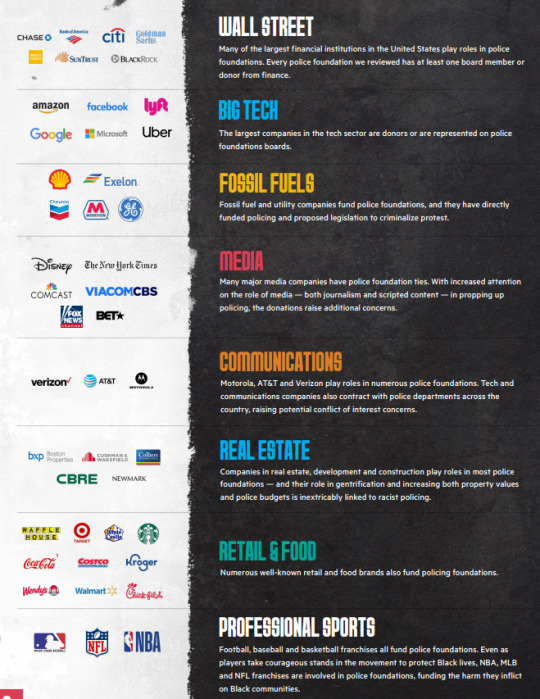
from Police Foundations. These are not necessarily corporations that donated to Cop City, but they are to show that donating to police is something corporations regularly do.
Cop City is another name for the Atlanta Public Safety Training Center in Atlanta, Georgia.
Funded with $90,000,000 in taxes and donations.
Largest police training facility in the United States.
Located in the densest black populated area in Georgia.
Cop City is being built in one of Atlanta’s last forests.
Stop Cop City protester and environmentalist activist Manuel Esteban Paez Terán was shot “12 or 13” times by a police officer despite Terán not firing at the police. The cop did not face charges because the killing was “objectively reasonable under the circumstances of this case”.
Georgia Attorney General Chris Carr described Defend Atlanta Forest as “an anarchist, anti-police, and anti-business extremist organization” and 61 activists have been charged with domestic terrorism.
The Israel Defense Force (IDF) directly shares strategies with the Georgia International Law Enforcement Exchange (GILEE). “The Atlanta Police Department and Fulton County SWAT teams had conducted training exercises in an abandoned hotel to remove “Hamas terrorists’.”
Corporations like Dunkin Donuts parent corporation Inspire Brands, Coca-Cola, Chic-Fil-A, Bank of America, UPS, Norfolk Southern, and more help fund Cop City with multimillion-dollar donations. Coca-Cola, UPS, Chic-Fil-A, and more made statements during the murder of George Floyd with things like “…end the cycle of systemic racism”, “creating social impact, advancing diversity, equity, and inclusion”, and “building stronger communities.” Corporations often donate to police foundations.
Articles sourced:
https://prismreports.org/2023/11/14/stop-cop-city-gilee-palestinian-genocide/
https://www.forbes.com/sites/morgansimon/2023/03/14/cops-and-donuts-go-together-more-than-you-thought-the-corporations-funding-cop-city-in-atlanta/
I’m not a professional or even a hobbyist journalist, so if I have wrong information here, please let me know.
429 notes
·
View notes
Text
Zack Beauchamp at Vox:
“Are we a country that looks out for each other ... or do you go down a path of amplifying anger, division and fear?”
That’s how Canadian Prime Minister Justin Trudeau described the stakes in his country’s upcoming election in an interview with Vox’s Today, Explained this week — outlining the 2025 contest as no ordinary election but a referendum on the very soul of Canada. This existential framing is an unsubtle shot at Trudeau’s rival, Conservative Party leader Pierre Poilievre, a populist firebrand who is currently outpolling the prime minister by a wide margin. Poilievre rose to party leadership as a champion of the extremist trucker convoy that occupied Ottawa in January 2022, and since then has regularly pandered to far-right voters. He has proposed defunding the CBC (Canada’s widely respected public broadcaster) and repeatedly promoted a conspiracy theory in which Trudeau is in league with the World Economic Forum. There’s a reason that Trudeau and many others have directly linked Poilievre to Trump: His political style practically invites it. But how accurate is the comparison? Is Canada really poised to be the next Western country to fall to the far-right populist global wave? The answer, as best as I can tell, is mixed.
It’s true that, by Canadian standards, Poilievre is an especially hard-nosed figure, one far more willing to use extreme rhetoric and attack political opponents in harsh terms. But on policy substance, he’s actually considerably more moderate than Trump or European radicals. Mostly eschewing the demagogic focus on culture and immigration that defines the new global far right, Poilievre is primarily concerned with classic conservative themes of limited government. His biggest campaign promises at present aren’t slashing immigration rates or cracking down on crime, but building more housing and repealing Canada’s carbon tax. Poilievre is basically just a conventional Canadian conservative who wraps up his elite-friendly agenda in anti-elite language aimed at working-class voters. He’s the kind of politician that some Republicans wish Donald Trump was: a tame populist. Understanding Poilievre isn’t just of interest to Canadians. There are reasons that his brand of populism is less virulent than what’s cropped up in many other Atlantic democracies — ones that hold important lessons for safeguarding democracy around the world.
Why Pierre Poilievre doesn’t fit the far-right script
The University of Georgia’s Cas Mudde, one of the leading scholars of the European right, has developed what is (to my mind) the most useful definition of radical right politics today. In his account, this party family — factions like Hungary’s Fidesz, France’s National Rally, and the US GOP — share three essential qualities. First, they are nativist; they strongly oppose immigration and multiculturalism. Second, they are willing to use aggressive, even authoritarian measures to deal with social disorder like undocumented migration and crime. Finally, they are populist, meaning that they define politics as a struggle between a virtuous people and a corrupt elite. Poilievre is certainly a populist. A right-wing operative and politician since he was a teenager, he rocketed to the top of the Conservative Party hierarchy after emerging as the most vocal champion of the 2022 Ottawa occupation. The uprising, which began against pandemic restrictions but swiftly became a broader far-right movement, was quite unpopular nationally. But inside the Conservative Party, there was enough support for its “pro-freedom” message that Poilievre rode his pro-convoy stance to victory in the party’s subsequent leadership election.
Since then, his populism has focused relentlessly on attacking the media, “globalists,” and (above all) Trudeau. Casting the fight between his Conservatives and Trudeau’s Liberals as the “have-nots” versus the “have-yachts,” he has argued that the prime minister embodies a debased Ottawa establishment out of touch with the needs and values of ordinary Canadians. In a recent speech, Poilievre cast Trudeau as an “elitist” leader gunning for Canada’s freedoms. “If he had read Nineteen Eighty-Four, he would have thought it was an instruction manual,” Poilievre argued. Somewhat ironically, Poilievre also believes Canada’s criminal justice system should be harsher. Blaming Trudeau for a recent rise in car thefts, Poilievre has argued for a reimposition of mandatory minimum sentences and other tough-on-crime policies. This means there’s at least a case that he also fits the second prong of Mudde’s definition of radical right politics. But on the first prong, nativism, Poilievre clearly diverges from Trump and the European far right. He has publicly insisted that “the Conservative party is pro-immigration,” and he has made appealing directly to immigrants a central part of his campaign strategy.
[...] Arising primarily in Western provinces (Manitoba, Saskatchewan, and Poilievre’s native Alberta), Canadian “prairie populism” historically draws strength from the notion that the federal government cares more about the population centers in Quebec and Ontario than the rest of the country. Prairie populism, which comes in left- and right-wing varieties, focuses far more on regional and economic issues than the cultural obsessions of the modern far right. “We have had a long history of populism — particularly in the prairie provinces, the Western provinces — going back to the 1920s and 30s,” says Keith Banting, a professor at Queen’s University in Ontario. “Populism draws less extensively on anti-immigrant sentiment in Canada than it does almost anywhere else.” Indeed, Poilievre’s biggest focus is cost-of-living issues — blaming ordinary people’s economic pain on high taxes and big government. His signature proposals are repealing Trudeau’s carbon tax, cutting spending to fight inflation, and removing restrictions on housing construction.
[...]
Poilievre’s “plutocratic populism”
While Poilievre is a very Canadian figure, fitting solidly into the right-wing prairie populist tradition, his politics also have a lot in common with a concept developed for the United States: political scientists Jacob Hacker and Paul Pierson’s “plutocratic populism.” In their book Let Them Eat Tweets, Hacker and Pierson argue that the Republican Party uses culture war as a vehicle to attract popular support for a party that primarily caters to the interests of the rich. This strategy of “exploiting white identity to defend wealth inequality” allowed Trump’s GOP to attract downscale, non-college-educated voters without abandoning its core commitment to tax cuts and deregulation.
But in the United States, the populists ate the plutocrats. Trump’s anti-democratic instability and economic heterodoxy on issues like trade led some GOP billionaires, like the Koch family, to try and unseat him in the 2024 primary. They failed miserably and now are slinking back. In the Republican Party, MAGA is calling the shots. Poilievre, by contrast, keeps his populism within plutocrat-acceptable bounds. His rhetorical gestures toward the working class are paired with solidly pro-rich policy views and a distinct absence of attacks on the democratic system itself. In 2013, he claimed to be “the first federal politician to make a dedicated push” toward imposing US-style right-to-work laws in Canada. He has endorsed tax cuts for the rich and cuts to social spending. His trade policy is far more free-market than Trump’s. There are no signs that he would challenge the legitimacy of Canadian elections, let alone stage a January 6-style insurrection.
Vox reports on Conservative Party of Canada leader Pierre Poilievre's brand of right-wing populism is tamer than Donald Trump, Viktor Orbán, or Marine Le Pen's.
5 notes
·
View notes
Text
Excerpt from this New York Times story:
The federal government will grant car and auto parts factories in eight states $1.7 billion to begin producing electric vehicles and other clean energy technology, the Biden administration announced on Thursday.
Among the 11 recipients will be a Jeep factory in Belvidere, Ill., that the brand’s parent company Stellantis closed last year. The money will allow the plant to reopen and produce electric vehicles, officials said, restoring almost 1,450 jobs.
Other beneficiaries include a factory in Georgia that plans to make Blue Bird electric school buses, a General Motors factory in Michigan that will shift production from gasoline to electric vehicles, and a Harley-Davidson factory in Pennsylvania that will increase production of electric motorcycles.
The funding helps to address fears that electric vehicles will endanger jobs at factories that make gasoline-powered vehicles or parts for internal combustion engines as the industry shifts to E.V.s. To qualify for the money, companies had to commit to retraining their existing workers.
Employees at all of the factories chosen are represented by unions. Officials said they gave priority to communities that suffered disproportionately from pollution or lack of investment.
Several of the factories are in Pennsylvania, Michigan or Georgia, states where narrow margins will determine the outcome of the presidential election. President Biden, in a statement, sought to contrast his industrial policies with those of former President Donald J. Trump.
The funds will preserve 15,000 jobs and create almost 3,000 new ones, Jennifer Granholm, the energy secretary, said on a conference call with reporters on Wednesday. In a reference to China, she said the money will allow the United States to “compete with other countries who were subsidizing their auto industries.”
The awards will draw on funds allocated by the Inflation Reduction Act passed by Democrats in Congress in 2022. The legislation provided subsidies that have fed a boom in construction of electric vehicle factories and battery plants.
3 notes
·
View notes
Text

GRETA MORRISON
Born under the glimmer of Hollywood's golden era, with a name inspired by screen legend Greta Garbo, Greta Morrison came from the lush comfort of her privileged upbringing to the rigorous kitchens of Le Cordon Bleu. She's traded opulence for the heat of the stove and the zest of innovation. As the soon-to-open La Boheme's heart and soul, she marries her passion for exquisite cuisine with a dash of rebellion. Amidst personal awakenings and culinary conquests, Greta wants to remain a steadfast in her commitment to authenticity, love, and the creation of unforgettable experiences. She aims to weave her own legacy in Covington, Georgia.
SELF
NICKNAMES: G, Chef G AGE: 40 BIRTHDAY: May 5, 1981 SEXUALITY: Lesbian GENDER: Cis Female PRONOUNS: She/Her PROFESSION: Owner & Chef of La Boheme (opening soon) LOCATION: Orchid Park, Covington, Georgia FACE CLAIM: Danielle Savre RACE/ETHNICITY: Caucasian NATIONALITY: American HEIGHT: 5'6" BUILD: Slender and fit HAIR: Blonde, often styled in a casually elegant manner EYE COLOR: Blue ALLERGIES: None, but has a peculiar dislike for cilantro DISORDERS: Mild anxiety FASHION: Rustic elegance combined with a touch of Southern charm. Blend of comfort with a hint of sophistication. Fitted blazers, soft flowing blouses, occasional statement piece like bold, patterned scarf. Earth tones and textures, leather boots and artisan jewelry that add personality to her ensembles. NERVOUS TICS: Taps her fingers rhythmically on surfaces when deep in thought HOBBIES: Antique shopping, especially culinary tool collecting INTERESTS: Sustainable farming, culinary history, poetry POSITIVE TRAITS: Creative, empathetic, ambitious NEGATIVE TRAITS: Impatient, self-critical, struggles to ask for help MBTI PERSONALITY: ENFJ (The Protagonist) ZODIAC CHART: Taurus Sun, Scorpio Moon, Virgo Rising CORE VALUES: Integrity in culinary creations, community engagement, sustainability PERSONAL CHALLENGES: Finding a balance between work and personal life, overcoming childhood neglect PERSONAL ACHIEVEMENTS: Establishing a successful culinary career independently, nurturing meaningful relationships, successfully breaking from her family’s traditional expectations to carve out her own path, creating a loving and chosen family LIFESTYLE: A blend of culinary innovation and quiet, quality time with loved ones QUIRKS: Small whisk tattoo on the side of her left ribs, bursts out French when cooking or overwhelmed or angry FUTURE ASPIRATIONS: To expand her culinary brand focusing on sustainable practices for fine cuisine, write a cookbook intertwining recipes and narratives, and share cooking tips online, reaching a wider audience with her culinary philosophy and skills.
FAMILY
MOTHER: Julien Morrison (deceased, was a socialite and philanthropist, with a fondness for old movie stars, which influenced the naming of her daughters) FATHER: Peter Morrison (successful businessman, often distant) CHILDREN: Step-daughter, Emilia Parish SIBLINGS: A younger sister named Katharine Morrison, after Katharine Hepburn. FIANCÉ: Laikyn Parrish, a novelist and the adoptive mother of Emilia
BIOGRAPHY
tw: cancer, death
From the opulence of her birthright to the culinary heights of Le Cordon Bleu in France, Greta Morrison was always a vivid canvas of what a life lived under privilege looked like. Born into a wealthy family, to Peter and Julien, Greta's early years were marked by the kind of advantages that most could only dream of.
Since she was a child, Greta had everything her heart could desire. A pony? Her father would make sure hers was the most prized and that she had the best instructors. The latest toy? She would have two, for the sake of never to worry about losing it. A trip to Disney World? Greta would be at the best hotel, with all at her disposal. She had everything, except what she truly desired—present parents.
Their wealth permitted them to provide the best tutors, and nannies, but nothing replaced that abandonment in her heart. Because their life was so busy, her dad with work and her mom as a socialite, Greta was rarely in their home in Georgia. Always traveling with them and the staff, or being sent away on her own. Her educational began at an all-girls boarding school in Switzerland, and Greta, having learned ways to get her parents attention, was never afraid to get herself into trouble. She quickly carved out a reputation for herself there.
The privileges that surrounded her seemed only to fuel her defiant spirit, and Greta never shied away from pushing boundaries. Troublesome incidents and clashes with authority figures peppered her adolescence, all that deviated from what her mother had expected her privileged upbringing to be. The structured environment of the boarding school struggled to contain her free spirit, and Greta's endeavors became a defining feature of her youth.
Around that same time, Greta grappled with the exploration of her own sexuality. It was during these formative years that she first began to realize and understand her attraction to women, thought it wasn’t until many years later that she began identifying herself as a lesbian—as the conservative environment of the boarding school provided no sanctuary for such self-discovery.
After graduation, Greta took a gap year to travel Europe and that’s when the culinary world beckoned, which Greta answered the call with gusto. Her culinary adventurous in Europe took her to the laps of many women, which she greatly appreciated the mixture. Beautiful women and excellent food were Greta’s kryptonite. It wasn’t until later into her gap year, unsure what to do with her life still, that her path crossed with Marie DuPaul, a lover much older than her, who managed to get Greta a spot to study in the prestigious Le Cordon Bleu in France.
Her time there broadened not only her palate but also her appreciation for love and romance. She learned with the French that any woman could be romanced by their stomachs, if cooked the right food.
Greta's culinary prowess and insatiable curiosity for the world led her to work under the best chefs in Paris, where she honed her skills and refined her craft, aside from working her ass off. For almost a decade, she wandered far from her country, embracing the world as her home instead. Yet, despite the allure of exotic locales, her roots remained tethered to the small town of Covington, Georgia.
Tragedy struck when her mother became sick with cancer, pulling Greta back to her home. Reluctantly, she left her work, her friends and a few lovers and returned to the States. Her arrival felt more like a bittersweet farewell, as her mother's passing cast a somber shadow over the reunion. The anchor of her family, the very force that had nurtured her extraordinary spirit, was gone, leaving Greta adrift in a sea of grief.
Five years later, Greta finds herself at a crossroads, ready to embark on the journey she promised herself she would undertake – building her own fine cuisine restaurant in her hometown. The years, and her hard work in kitchens all over, taught her to be more humble and less entitled, but she’s still the same stubborn girl she was when she first left Covington.
Since last October she's been engaged with Laikyn Parrish. They moved in together quickly when they started dating, and they've been like that for around three years. Lake and her met through Greta's younger sister and Lake's daughter, who happened to be best friends and in the same cheering squad together—the one Lake coaches. They did a whole plan to get Greta and Lake together, parent trap style, and even though it almost went sideways a first, it worked out in the end. Greta is head over heals for Lake, she'll do anything for her woman. From bringing her midnight snacks when she's writing up her next novel to praising and supporting every single endeavor she joins in.
Pinterest board: https://pin.it/2kgZffq0q
5 notes
·
View notes
Text
""Contempt for the Democratic Party’s progressive base is a sure path to Donald Trump’s return" A specter haunts the Democratic Party: the ghost of Clintonism, an ideology that’s been discredited at the ballot box yet still retains a mysteriously powerful hold on party elders. Hillary Clinton’s defeat in 2016, when she lost a winnable election to a political novice who scored the highest disapproval polling numbers in modern American history, should have sounded the death knell for her brand of politics. Clintonism is all about triangulation—which in practice means building elite comity with establishment Republicans while disdaining populist forces on the right or the left. Pioneered by Bill Clinton in the 1990s with his attack on the rapper Sister Souljah, this strategy initially enjoyed some success—but in the long run it undermined the Democratic coalition, especially as the price of free trade started to be felt by the working class.
...
Joe Biden’s success in 2020 was due in no small part to his deliberate rejection of Clinton’s failed strategy. “Scranton Joe” courted both Sanders voters and blue-collar whites. He promised expanded infrastructure spending and tougher trade deals. Progressive young people might not have given Biden their votes in the primaries, but he campaigned as a candidate who saw them as part of his coalition and duly won their votes on Election Day.
One side effect of Israel’s ongoing war in Gaza is that it has given Clintonism a new lease on life. Until early May, Biden gave Israel a virtual blank check to fight a ferocious war with massive civilian casualties. This has been enormously unpopular with young people and nonwhite voters, splintering the Democratic coalition anew. A Times/Siena poll in early May showed Biden trailing in the swing states of Michigan, Arizona, Nevada, Georgia, and Pennsylvania.
Perhaps sensing an opportunity, Hillary Clinton has reemerged like the ghost of elections past with incendiary rhetoric designed to deepen the contradictions within the Democratic coalition. On May 9, she told MSNBC host Joe Scarborough, “I have had many conversations, as you have had, with a lot of young people over the last many months now. They don’t know very much at all about the history of the Middle East, or frankly about history in many areas of the world, including in our own country.” Alas, Biden himself has joined in the student-bashing with his own hyperbole about the extent of antisemitism and violence in the pro-Palestinian protests.
Leaving aside the fact that Clinton—who, like Biden, voted for the disastrous Iraq War in 2002—has no great claim to being a scholar of the Middle East, her insulting language seems deliberately designed to dismiss progressive young people horrified by what is happening in Gaza from the Democratic coalition. Since 75 percent of Democrats disapprove of Israel’s onslaught in Gaza, Clinton is in fact articulating a politics of open scorn for the overwhelming base of the party.
Who will replace the young people that Clinton regards as dunces? In 2016, the pitch was made to suburban Republicans of the Never Trump persuasion. In 2024, this has been recast as the Biden campaign’s attempts to appeal to Nikki Haley Republicans. This strategy only makes sense as a response to Biden’s loss of support among young people and nonwhite voters.
#us politics#democrats#corporate democrats#hillary clinton#joe biden#neoliberalism#genocide joe#butcher biden
3 notes
·
View notes
Text
The Yellow Face
This is the third tale from Memoirs i.e. the second published volume.
"The Park" is likely Regent's Park. This was also home to what is now called ZSL London Zoo, which features in Dracula as well.
Yellow fever is a disease transmitted by mosquitoes. Not something mainland Britain really has a problem with - gnats and midges are more our thing. As a result, we do not routinely vaccinate here, although you can get a jab for travelling to affected areas.
But Victorian audiences would have been familiar with it via reports from the Empire.
Like Lee in "The Twisted Lip", Pinner and Norbury are two small communities that became suburbs due to urban development in the first half of the 20th century and are both in Greater London.
Pinner itself had a 'Tube' station; the Metropolitan Railway having reached there in 1885. Sitting in Zone 5, the Met bought up the land around the railway and then developed it, later using the branding "Metro-land" and selling housing to middle-class commuters. This would be in the future though.
Norbury sits on the London to Brighton main line and is served by stopping trains from London Bridge or (in peak hours) Victoria. It sits in Zone 3, giving you an idea of just how far inside the city it now is - less than seven miles from Charing Cross. The line would later be increased to four tracks in 1903 and electrified in 1925. You could get a train from Victoria in 20 minutes at the time. It's around the same today or a bit longer, although much more frequent.
The Crystal Palace was a huge modular iron and glass building, originally built in Hyde Park for the 1851 Great Exhibition and then moved to Penge, where it served as an entertainment and exhibition venue. It burnt down in 1936, but not before giving its name to the park, the neighbourhood and the Premier League football club, one of the founding members of the Football Association, although the latter now play at Selhurst Park.
Georgia's ban on interracial marriage was introduced in 1750 i.e. before the Declaration of Independence and struck down by the Supreme Court in 1967 in Loving vs. Virginia.
The British for their part did not ban interracial marriage in Great Britain. They did so in India, along with in the pre-independence Americans and there was plenty of legally allowed discrimination, the so-called "colour bar" in Great Britain itself.
Your main issue would be societal backlash in any event - while Jules Verne has Phileas Fogg marry an Indian woman at the end of Around the World in Eighty Days, he makes it clear more than once that she looks like a white woman. So, yeah.
27 notes
·
View notes
Text
𝐝𝐞𝐥𝐢𝐜𝐚𝐭𝐞 - 𝐜𝐞́𝐬𝐚𝐫 𝐚𝐳𝐩𝐢𝐥𝐢𝐜𝐮𝐞𝐭𝐚
・𝐫𝐞𝐪𝐮𝐞𝐬𝐭𝐞𝐝 𝐛𝐲: 𝐦𝐞
𝐬𝐲𝐧𝐨𝐩𝐬𝐢𝐬: 𝐡𝐞 𝐰𝐚𝐧𝐭𝐞𝐝 𝐡𝐞𝐫 𝐲𝐞𝐭 𝐟𝐨𝐮𝐧𝐝 𝐡𝐢𝐦𝐬𝐞𝐥𝐟 𝐚𝐟𝐫𝐚𝐢𝐝 ��𝐟 𝐭𝐡𝐞 𝐮𝐧𝐤𝐧𝐨𝐰��.
𝐚𝐮𝐭𝐡𝐨𝐫'𝐬 𝐧𝐨𝐭𝐞: 𝐢 𝐥𝐨𝐯𝐞 𝐭𝐡𝐢𝐬 𝐦𝐚𝐧, 𝐨𝐤. 𝐬𝐨 𝐢 𝐰𝐢𝐥𝐥 𝐭𝐚𝐤𝐞 𝐚𝐝𝐯𝐚𝐧𝐭𝐚𝐠𝐞 𝐨𝐟 𝐬𝐚𝐢𝐝 𝐥𝐨𝐯𝐞 𝐭 𝐨 𝐝𝐢𝐯𝐞 𝐢𝐧𝐭𝐨 𝐦𝐲 𝐝𝐞𝐥𝐮𝐥𝐮 𝐥𝐚𝐧𝐝.
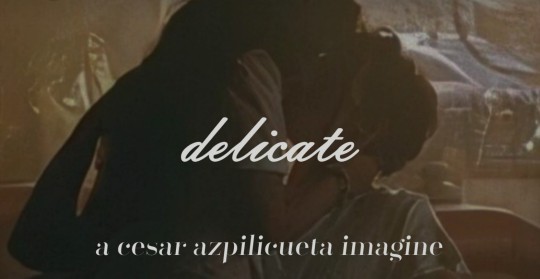
( my angry pookie bear )

" Azpi, are you ok? "
His thoughts were interrupted by the sound of his national teammate and friend, Alvaro Morata, the players were currently training for their upcoming match against Georgia for the Euro campaign, and yet he wasn’t certain if he was truly a hundred per cent there given the feelings which have been consuming him as of late, he looks up, offering Alvaro a soft smile before nodding. " I’m ok "
Alvaro chuckles softly, if there was one thing he knew about César; it was that he was at the most part, a highly focused man both during training and on the pitch yet the past few days he’d noticed how spaced out the older male had gotten, " No you’re not, come on … " he gently kicks the ball towards him before adding, " What’s up? "
To say he was uncertain about divulging into his emotions would be an understatement, it all started three months into his arrival to the Colchoneros side in Madrid, a brand new yet familiar chapter in La Liga, and during his stay in Madrid, he found himself growing attached to an individual in his building, a young woman residing in the apartment across from his.
They never exchanged any word past the standard greetings and soft smiles of acknowledgment, he didn’t even know her name until he heard the owner of the building who resided on the first floor greet her and chat with her, she seemed so animated chatting with the older woman that it peaked his curiousity in regards to who she is.
He heaved out a sigh, realizing that there was no harm in seeking advice from Alvaro, seeing as he was happily married with his own family - " How did you approach Alice? "
Alvaro’s lips curled into a knowing smile, he had finally realized why his friend and teammate wasn’t a hundred per cent in — he took a moment to respond, " I was terrified, we had been on friendly terms for a few months and even then I knew that she was the one, her passion for life, the way she carried herself " he trails off, smiling " I just knew that she would be the perfect mother and she is, it took a lot for me to truly face what I felt head on "
César nods, " What if you never knew her? would it have been easy to ask her? "
Alvaro hums softly, " Honestly … yeah, my heart knew and when you believe in your heart, it’s easier to jump in " he smiles, " So whoever she is, she’s lucky "
He held on to what Alvaro said, placing it in the back of his mind as the national team dove into the match against Georgia, scoring an impressive 7-0 in that match before the international break was put on a halt, with the pair returning to La Liga action.
Two days before the derby, César had returned home from training drained and completely exhausted, more than ready to sleep away the night before his eyes widened upon seeing her standing near his doorway, he adjusts his posture then walks up to her with a soft smile, " Hi " he greets her with a soft tone.
She looks up, her eyes widening and cheeks immediately reddening before she muttered a soft, " Hi " in return, she visibly swallows the lump in her throat before adding on, " I don’t know if you -um- … if you eat properly, because I have noticed that you return home very exhausted which naturally means you’re probably not getting a good meal so -erm- … I made you something, it’s healthy so you don’t have to worry but I would really sleep well knowing that at least you’re sleeping on a full stomach "
His eyes widened, the drowsiness he felt suddenly disappearing as she handed him the wrapped plate, " Oh " he murmurs before looking up to meet her tentative yet kind gaze, his lips curve into a smile. " Thank you "
She mirrors his smile, " You’re welcome, I’m going to head home so have a nice night "
" You too " He responds, watching as she walked towards her front door. " Do you have anything two days from now? "
She halts her steps midway then turns around, shaking her head she asks. " Why? "
" Have you ever attended a football match live? " He wonders with a curious tone.
She grows silent, before smiling and shaking her head, " Last match I attended was the 2010 World Cup final when Spain won, why? "
" I’ll buy you a ticket to come see the Madrid derby " He shrugs with a soft smile, " If that peaks your interest "
Her brows shot up in surprise, " Why? " she asks with a smile.
He chews on his bottom lip before a nervous chuckle erupts from his lips, " I’ve been trying to find a way to talk to you for a while and to be honest, I was lost until I saw you just now, you can say no if you don’t want to come " he rubs the back of his neck, avoiding her gaze.
The gesture was enough to have her giggling then saying, " I’ll come but don’t spend your money on me, I’ll purchase the ticket "
" No please " He interjects with a soft smile, " I want to "
For a brief moment, she did not say anything before relenting with a soft chuckle. " Ok! I will bite "
He beams, " Perfect, do you mind if I get your phone number, to send you the details? "
She shakes her head, " I don’t mind " she takes his cellphone, typing in her number then calling her phone before handing the device back to him. " Goodnight "
" Goodnight " He smiles.
__
Suffice to say that experiencing the derby live was quite the experience for her, she’d seen her fair share of matches on the television yet it paled in comparison to actually being present and witnessing the passion of the fans in attendance, and just as the match concluded with a 3-1 win to Atletico, she left the stadium and was about to head to her car when a familiar sound calling her name caused her to stop midway, she turned around to spot César jogging up to her, with a soft smile she said. " Hi "
He mirrors her smile, " Hi, what did you think of the match? "
She giggled, " It was quite intense but I mean you guys won, so congratulations "
" Thank you " He nods, still wearing the same smile. " Do you want to -um- … do you want to join me for dinner later? there’s a restaurant nearby? it’s not fancy but I like going there sometimes? "
Her brows shot up, surprise itched across her features. " Like a date? " she deduced.
A visible rosé dusts his cheeks, followed by a nervous chuckle that erupts from his lips. " No I mean … it’s, an invite as a friend, I don’t want to give you the wrong impression or make it seem like I’m creep because I’m not " he rambles on, " I’m … like I said, I wanted to talk to you ever since I saw four months ago and it was nerve wrecking for me if I’m being honest with you "
She covers her mouth for a brief moment before she responds, " César "
He stops, blinking rapidly. " Yeah? "
" Text me the name of the restaurant and I will meet you there " She states before waving at him then walking back to her car.
It took a second for him to register that she agreed before grinning, he sprints towards the bus before immediately sending her a text message with the details, his excited expression caught Alvaro’s attention, " I take it things are going well "
César chuckles, " They are " he shakes his head, " They truly are! "
_________________________________________
Later on that night, César sat down in his usual table - glancing out the window every now and then to check if she had arrived, and when he turned his head away for a moment, glancing down at his phone; the chiming of the bell caused him to look up, his face lighting up when she walked in, dressed in a casual yet elegant knee length white floral printed dress with a baby pink cardigan on top, her hair was down in beautiful curls for the first time since he’d seen her, her features highlighted by the soft makeup she wore.
She walks up to the table and smiles, " Hi "
He was quick to stand up, mirroring her smile. " Hi " he walks around to pull the chair for her to sit in. " Here you go "
She smiles, " Thank you " she sits down and watches as he returns to his seat. " This is a lovely place "
He nods in agreement, " It is, I usually come here whenever I need to clear my head "
" Alone? " She asks with a curious tone.
" It’s not like I have anyone " He chuckles, not wanting to ruin the mood. " I just come here cause it gives me a sense of home, reminds me of my mother’s cooking "
" Aw " She smiles, " It’s so cute "
" Oh well " He shrugs softly, with a soft smile.
They spend the rest of the night chatting after they ordered their meals, divulging further into their lives beyond their careers - he’d come to know that she’s an artist for a living, which explained why there would always specs of paint on the t-shirts she wore whenever he saw her out, " So you paint for clients? or you paint and sell? "
" It depends on, I do both - and my instagram page is booming with success so it’s nice, I love art, it’s nice to have an artistic outlook on life " She states.
" That’s nice " He states with a soft smile before they into a brief wave of silence.
She decides to break that wave of silence by asking, " What made you move back home? "
" I missed being here, and besides … there was nothing left for me to prove in London, so it felt right " He smiles, " and I think I can find my happiness here "
The last phrase elicited a smile from her, " Are you happy now? "
" I’m very happy " He nods, smiling softly.
They end the night on a high note full of chatter and a lovely atmosphere, they return home and just before she enters her apartment she grabs his wrist causing him to turn around with a confused expression which soon shifted into surprise when she had taken the plunge, closing the distance between them to capture his lips in a soft kiss that had definitely took him by surprise that quickly vanished as she deepened the kiss, inciting a groan from him.
She pulls back and giggles, " I wanted to do that since the day I saw you " she whispers.
He smiles, " I’m glad that you did "
" I hope you know what this means " She states.
" What? " He wonders.
" You’re not getting rid of me that easy " She grins.
" I wouldn’t dream of it " He smiles.
#cesar azpilicueta#cesar azpilicueta one shot#cesar azpilicueta fanfiction#cesar azpilicueta imagine#cesar azpilicueta fluff
9 notes
·
View notes
Text
Brittany Howard Impresses Sold-Out Webster Hall on Friday Night

Brittany Howard – Webster Hall – February 16, 2024
I first saw Brittany Howard more than 10 years ago, fronting Alabama Shakes at a sold-out Bowery Ballroom. That show totally rocked and Howard made an immediate lasting impression: a name, a voice, a presence I knew I’d be experiencing a decade or more down the road, in some form or another. On Friday night at Webster Hall, that form was perfectly defined, Howard headlining the first of two very sold-out shows, her name, voice and presence continuing to make lasting impressions on New York City audiences. The show opened with a set from Howard’s friend and Bermuda Triangle side-project-mate Becca Mancari, who tied together rock, soul and country through her deeply personal songwriting, setting up things just right for the headliner to come.





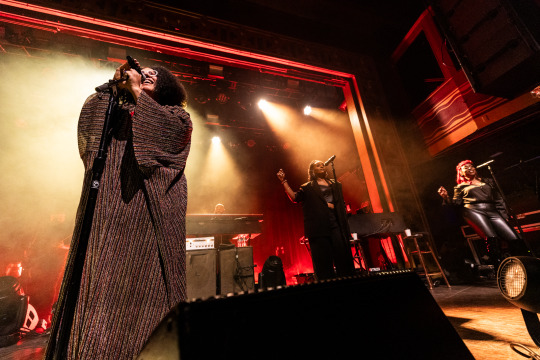

Howard’s band took the stage first, nine strong with two guitars, keyboards, organ, bass, drums and two backup singers, building an atmospheric churchlike chord for her entrance, the lights colored like sunlight through the stained glass of a chapel. The set began with “Earth Sign” and then “I Don’t,” just like her brand-new, week-old album, What Now, although she moved easily between the newer material and older songs, drawing from soul, R&B, folk, rock and combinations thereof, the widespread, universe appeal of her sound and energy easily explaining why every cranny of the club was filled with fans of all types. The set picked up momentum with “Stay High,” off 2019’s Jaime, and the following “Red Flags,” with the band turning out a deeper, darker sound.







“Samson” gave the ensemble even more room to explore, a nifty back-and-forth between the guitar and keys, Howard repeatedly singing, “I'm split in two.” That was one of many love songs, with some, like “Baby,” feeling especially personal as they resonated across the room. The latter half of the show found Howard fulfilling her back-when promise, elevating above genre or labels: “History Repeats,” a get-down Friday-night banger, “Georgia,” with its slow, cathartic organ build, “Goat Head” — pairing a delicious groove with lyrics like “’Cause Mama is white / And Daddy is black / When I first got made / Guess I made these folks mad” — “13th Century Metal,” with its contrasting sonic chaos with positive messaging, and “Every Color in Blue,” the instrumental complexity of the band matching the complexity of the song’s mental health subject matter. The set ended on a quiet note, Howard all alone with an acoustic guitar, singing “Power to Undo,” another sold-out show in NYC, another long-lasting impression on all in attendance. —A. Stein | @Neddyo

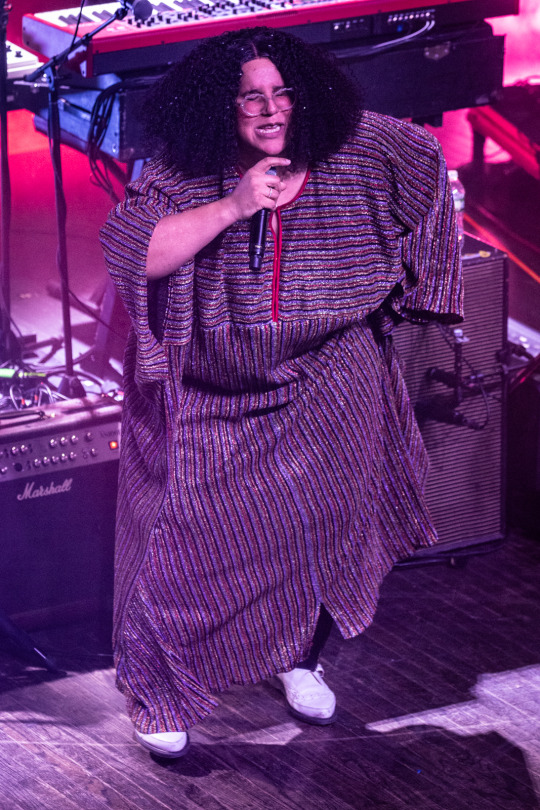
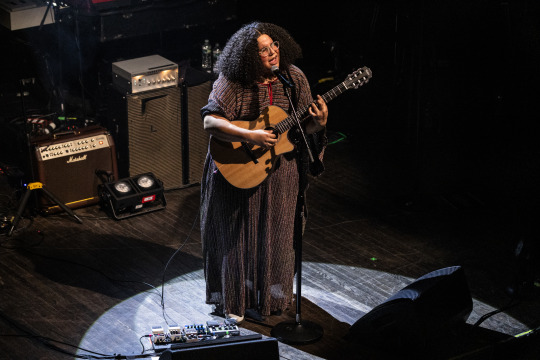
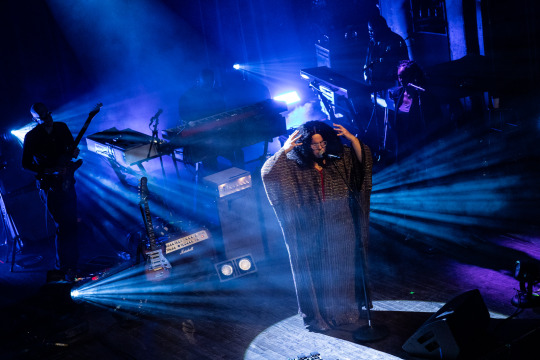
Photos courtesy of Ellen Qbertplaya | @Qbertplaya
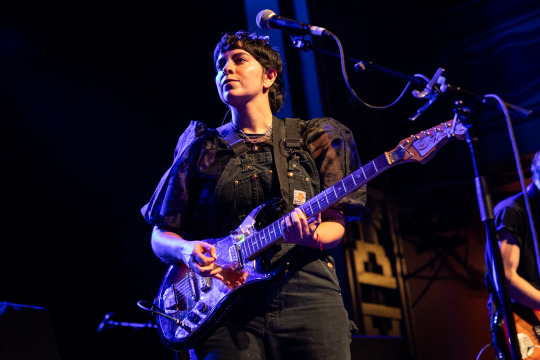




#Aaron Stein#Alabama Shakes#Becca Mancari#Bowery Presents#Brittany Howard#East Village#Ellen Qbertplaya#Jaime#Live Music#Music#New York City#Photos#Review#Webster Hall#What Now
3 notes
·
View notes
Text

https://web.archive.org/web/20210128141211/https://www.spin.com/featured/jack-harlow-january-2021-cover-story/
Jack Harlow Knew This Was Coming
Well, sort of. But now he’s got a smash hit, a new album featuring Adam Levine, and he may have accidentally altered the course of NBA history
January 27 2021, 10:00 AM ET
DJ Drama was in no rush to return from his lunch break.
Sandwiched between the outskirts of Atlanta’s Bankhead neighborhood and the sprawling campus of Georgia Tech University is Means Street Studios. This hub of hip hop recording has played host to a litany of stars since its 2013 inception. Playboi Carti, Gucci Mane, Lil Uzi Vert and the late Nipsey Hussle are just some of the artists who’ve graced its halls.
Machine Gun Kelly X SPIN Cover Story - Promo 2
However, on this day in November 2017, the Means Street corridors were not especially glamorous. Atlantic Records had selected the studio complex to host its quarterly A&R conference in which DJ Drama, legendary mixtape arbiter and co-founder of Atlantic’s Generation Now imprint (Lil Uzi Vert, Killuminati), played a significant role.
Overnight success stories often begin at conferences like this one, long before viral TikTok challenges and feature placements on streaming services come into play. It can sometimes take years for an artist to build enough trust with a label to earn a star-turning album or single rollout. Drama knows a thing or two about this waiting game. It was his seminal free mixtape series, Gangsta Grillz, that helped rappers circumvent this indefinite layover and maintain relevance during the 2000s.
“I was just kind of, you know, taking my time to get back,” he admits over a Zoom call, reminiscing. He was, after all, DJ Drama. He was far past the stage where he needed to outhustle fellow A&Rs and executives. New music needed to hustle its way to him.
Still, as 2014 signee Lil Uzi Vert inched closer to international superstardom, Generation Now was in the market for a second star. When Drama finally returned from his break, something extraordinary happened.
“Right as I walked in just a little bit late, ‘Dark Knight’ was on. They were playing ‘Dark Knight’ in the meeting.”
A few months prior to Atlantic’s A&R summit descending upon Means Street, during the waning days of summer 2017, DJ Drama sat in a room at the studios beside his fellow Generation Now execs: Don Cannon, a similarly legendary mixtape DJ, and their partner Leighton “Lake” Morrison. Meeting with them were KY, a renowned engineer from Louisville, and a lanky, curly-haired white boy, also from Louisville, whose brand of brash-yet-self-conscious raps had built a fanbase whose support had him teetering on the brink of vested major label interest. This was Jack Harlow, Drama was told.
He knew who the 19-year-old rapper was. Drama’s friend and colleague Randy had hipped him to Jack’s Instagram page several months prior. Intrigued, Drama followed it and listened to a handful of the young rapper’s songs. The night before the formal introduction at Means Street, Jack had been thrust into a studio session by this same friend, Randy, to record with Generation Now’s inaugural signee, veteran rapper Skeme.
https://web.archive.org/web/20210128141211im_/https://static.spin.com/files/2021/01/SPIN_Cover_Story-Jack_Harlow-Hero_Image-6-1611691015-1280x1920.jpg
Harlow has endeared himself to a wide array of musicians in a short time CREDIT: Noah Schutz
“The way Randy talked about it,” Drama recalls, “He was like, ‘I just wanted to see if [Harlow] had his chops. ‘Cause, you know. Skeme ain’t no hoe.’”
However, despite Harlow’s passing grades at his session with Skeme, Drama and company weren’t ready to set anything in stone. “It wasn’t final,” he says as he remembers how the meeting with KY and Jack concluded. “I don’t know, it was like everybody wasn’t sold.”
In the aftermath of the inconclusive meeting, Harlow, sensing Generation Now’s hesitation, returned to Louisville and got right back to work. He would be releasing Gazebo, his fourth and breakout self-released project, the third week of November 2017, and he needed to fire a warning shot. One that both his fanbase and GN would heed. That materialized as “Dark Knight,” a bruising ramble introducing listeners to a reenergized Harlow, who did not appear to be reeling from the effects of leaving Atlanta without a deal.
“Know this shit boom when we came down south and I had to bring my own lil’ Metro,” Harlow rapped, likening a member of his crew to Metro Boomin, the multi-platinum Atlanta-based producer. The song ends on an even more confident note. “Funny how it all works out / Right before this I was feeling burnt out / Now the whole city ‘bout to get burned down.”
Harlow wasn’t quite peeved, but there was a specific edge to his delivery. The chip on his shoulder was just big enough. “Dark Knight” made exactly as much noise as Harlow hoped it would. Because of it, he quickly outgrew DJ Drama’s circle. Label offers were imminent, regardless of whether Generation Now was interested. Harlow knew this. So did Drama.
Thus, when the DJ returned from his lunch break that day at Means Street to hear “Dark Knight” blaring from studio speakers, he knew immediately he had a decision to make. On his own accord, Harlow had quickly gotten better, sharper and grown more polished. So much so that Atlantic would surely be preparing to take its own chance on him by meeting’s end, leaving Generation Now out of the picture.
“Oh! That’s just Jack,” he hastily announced to the room. “I’m already on that. We got that, you can tuck that,” he remembers saying. The room quickly moved to the next order of business. If DJ Drama was on that, the conversation was over.
Truthfully, neither Drama nor his partners were actually on that. But that would soon change. “I went to text Cannon to tell him they played ‘Dark Knight’ in the meeting,” Drama says, as he cracks a wistful smile.
“It forced our hand in a way, thankfully.”
https://web.archive.org/web/20210128141211im_/https://static.spin.com/files/2021/01/SPIN_Cover_Story-Jack_Harlow-Hero_Image-2-1611690609-1280x853.jpg
Jack Harlow photographed in Los Angeles, January 2021 CREDIT: Noah Schutz
It’s a Friday night in January 2021, and Jack Harlow is seated in complete darkness. The COVID-19 pandemic will soon be a year old, so instead of doing something like eating tacos and playing H-O-R-S-E—which, I’ve decided, would have been my suggested activity for this interview in a safer world—I’m staring at a Zoom screen as Harlow, whose camera is switched off, describes his current setting. I’m not allowed to see it. “I’m sitting in the dark right now, you don’t want to see me in this mood right now,” he warns. For a moment, it sounds like a very vulnerable-rapper way of saying I was in the zone right before this. My next question is, “What are you doing, writing?” His deadpan reply: “No, I’m doing an interview.”
It is exactly this type of shrewd and subtle wit that allowed Jack Harlow to become Jack Harlow.
Born in March 1998 to the proprietors of a family-run sign business in Louisville, Kentucky, Harlow’s narrative isn’t the most compelling. Unlike many of his peers, he didn’t have to escape extreme poverty or take penitentiary chances in order to provide. He’s not from a city that regularly produces rap stars, and despite his obvious skill level, it would be fair to mistake him for a math tutor. His free time would often consist of riding around with friends in search of adventure, hoping to catch a cute girl’s attention along the way. As exhausted of a character trope as this is, young Jack Harlow was very much just a regular kid. His writing ability is what made him irregular. It also gives him a puncher’s chance at becoming the preeminent star of his generation.
In the 2020s, as microwave TikTok fame continues to prove reliable as a launching pad to Billboard success, emphasis on range and craft in the mainstream will continue to dwindle across the board. In hip hop specifically, descendants of 808’s & Heartbreak-era Kanye West have spent much of the last 15 years redefining how much traditional rapping is necessary to be successful in the genre. These dynamics don’t interest Harlow as much as they could. His duty is to his wordplay, and the techniques he employs to keep listeners on their toes. Sometimes it’s a stretch of alliteration that he’s able to effortlessly maintain. Other times, he’ll thumb his nose so nonchalantly you’ll forget that it’s slick talk. “The ones that hate me the most look just like me. You tell me what that means,” he raps on the 2020 single, “Tyler Herro.”
https://web.archive.org/web/20210128141211im_/https://static.spin.com/files/2021/01/SPIN_Cover_Story-Jack_Harlow-Hero_Image-13-1611690856-1280x1920.jpg
Jack Harlow is ready to roll CREDIT: Noah Schutz
In present-day hip hop, recognition is less contingent on lyrical ability than it ever has been. Despite scattered worlds that continue to place the technical art of rapping on a pedestal—the J. Cole-led Dreamville imprint and Westside Gunn’s Griselda immediately come to mind—being a Good Rapper has long taken a backseat to marketability. This transition has created somewhat of a perfect storm for an artist like Harlow, who isn’t going to blow you away with metaphors or dizzying flow switches. But his unassuming charisma, coupled with a sturdy pen and the attention to detail to execute a line like, “Been tryna pop, now I’m on like Shumpert,” provides for a lane that he can dominate.
“You know, for some odd reason, it’s been what I’ve wanted to do for so long that I can’t even pinpoint what it felt like to not want to do this,” Harlow says. “Like, sometimes I wonder, ‘What was it like to be a purposeless child that was simply enjoying life?” His mother, a hip-hop fan, would soundtrack the household with Jay-Z, OutKast and Black Eyed Peas. Perhaps unbeknownst to mom, her young son was taking meticulous notes. He wasn’t just enthralled, he was inspired. “What’s Poppin’” was an eventual outcome, but an inevitable one.
Harlow’s biggest hit song to date (and of 2020), “What’s Poppin’” materialized in the way that an innumerable amount of hit songs have come together. Hotshot producer slides into hotshot rapper’s DMs with hopes that they can form a mutually beneficial partnership. This particular exchange made perfect sense. JetsonMade, the Roc Nation-managed producer behind DaBaby’s breakout hit, “Suge,” was looking to diversify his portfolio. And Harlow was in album mode.
“I heard those piano keys, and I was just taken,” Harlow recalls. After a weeks-long back-and-forth with Jetson while touring in 2019, Jack had finally carved out time to get into the studio with the in-demand producer. On day two, Harlow heard the sound that changed his career. “I think I probably reacted how a lot of people reacted when they heard that beat. It’s fucking hard.”
Incidentally, it wasn’t even the featured beat of the night. In a recent interview with Genius, Jetson and Pooh Beatz, a producer Jet often partners with (“Told Pooh he a fool with this shit”), recall the night they flipped through instrumentals, looking for something for Harlow to “pop his shit” over. “You’ve got to give the artist room to be creative as well,” Pooh said. “So I’m always listening for that simplest piece.”
That beat, accentuated with that bouncing, accelerated piano loop, gave Harlow more than enough room to be selective with his approach. “I said to myself, ‘Jack, don’t think too hard. Don’t bear down on this beat and smother it. You know, don’t try to go crazy on it. Just have fun with it.’ So that’s what I did. I said the first thing that came to mind.”
What’s poppin? Brand new whip, just hopped in I got options, I could pass that bitch like Stockton
Then,
Just joshing, I’ma spend this holiday locked in
Seriously? “Just joshing?” I had to ask.
“That was a line I’d always planned on replacing,” Harlow admits as he chuckles. Given the opportunity to address the subtle audacity of this cheesy-but-effective line, he perks up. “I was always going to get rid of it. It was a placeholder. It was literally just something that rhymes with the other shit.”
https://web.archive.org/web/20210128141211im_/https://cdn.brid.tv/live/partners/17243/snapshot/708561.png
Jack Harlow X SPIN Cover Talk
By the time he’d completed the song, it was far too late for replacements. For just over two minutes, on “What’s Poppin,” Harlow’s subdued-but-sharp flow darts in and out of the accelerated piano loop, buoying the dancing bassline Jetson and Pooh concocted. The beat doesn’t rush Harlow, and in turn, he doesn’t stifle it. After wrapping his sessions with Jetson, he played the song for confidantes on his team and friends back home in Louisville. Their response was the confirmation Jack needed. “What’s Poppin’” was the one. “I really treasure that moment because I use it as a lesson now when I’m trying to write,” he says. “I’m just like ‘go, go, go’ because look at the success that song is giving me when I just let go. It’s a lesson, you know, you just gotta let go and…” Harlow trails off briefly, perhaps rummaging through his brain for the word that will summarize this lesson. Seconds later, he finds it.
“Be instinctual.”
Shortly after its January 2020 release, “What’s Poppin’” was added to Spotify’s Rap Caviar playlist, the leading gatekeeper in the hip hop playlisting world. Securing a placement on a playlist like Rap Caviar in the streaming era is akin to being named a member of XXLmagazine’s “Freshman Class” during the early 2010s blog era. It won’t guarantee a successful career, but you’d be hard-pressed to find a more effective springboard into the national conscience. Once “What’s Poppin’” hit Rap Caviar, it never looked back.
The song and its remix, which features DaBaby, Lil Wayne and Tory Lanez, have now been streamed over 700 million times on Spotify. Consequently, Harlow is a millionaire and Grammy nominee at 22. In case that was unclear, he announces it just 10 seconds into his debut studio album, That’s What They All Say, released in December, on the album’s intro, “Rendezvous.” The album, which features Maroon 5’s Adam Levine, Lil Wayne, Lil Baby, and an appearance from the late R&B legend Static Major, is his biggest flex yet. The world had just learned his name, and already he was getting A-list stars out of bed for a set of tracks so versatile, comparisons to Drake are unavoidable.
“You know, it’s funny because, I remember my dad said to me he was proud of me because, you know, his dad was broke on a farm and grew up incredibly impoverished. Then my dad grew up a little better than him. And now, I’m a millionaire,” Harlow says, unable to disguise his pensive tone. “And he just wanted to point that out to me. It’s a huge step. I mean, I know that seems obvious for me, but it’s a huge step for him. I never met his dad—rest in peace—but if he could see the success, shit would be a whole ‘nother world to him. So it’s just nice to put it in perspective. You know, that’s the one thing I’ve been really careful about doing.”
https://web.archive.org/web/20210128141211im_/https://static.spin.com/files/2021/01/SPIN_Cover_Story-Jack_Harlow-Hero_Image-9-1611690722.jpg
Jack Harlow's trajectory continues to trend upCREDIT: Noah Schutz
The way Harlow ended his thought, it felt like a cautionary tale was coming. My hunch was pure. “Sometimes I think all these millionaires and artists get so wrapped up in entering the world and becoming friends with all the other millionaires when they get to L.A.,” he starts, “They get wrapped up in the world and it does become normalized. And they think to themselves, ‘Well, then, I have room to be depressed. Everyone around me is a millionaire and I’ll find something to be unhappy about.’”
Don’t let the depths of Harlow’s self-awareness disarm you; he knows he’s the guy right now. He always has. His account of the events surrounding his initial meeting with Generation Now at Means Street mirrors DJ Drama’s. Jack just sprinkles a little ego in, like parsley. “Drama was fucking with me, but he took a second. The label took a second. And I remember I ended up having to drop “Dark Knight.” I said, ‘I’ma just drop it.’ And that really got the buzz going. Labels started, people were interested. And I was like ‘O-K, yeah, yeah, no, I got it.’”
“So you sort of had to trigger your own bidding war,” I ask. He agrees. “Yeah, exactly. And they were on it quick.”
https://web.archive.org/web/20210128141211im_/https://static.spin.com/files/2021/01/SPIN_Cover_Story-Jack_Harlow-Hero_Image-1-1611694121-1280x1920.jpg
He's laid back and ready for a big 2021 CREDIT:Noah Schutz
This Cinderella ascent has not come without setbacks, however. With fame comes heightened visibility, which can trip up even the most vigilant of stars. The NBA’s announcement that it would resume play following its March COVID-19 stoppage came with a strict set of safety guidelines. Players were prohibited from leaving the Disneyland campus that hosted the remainder of the season, fondly known as “The Bubble,” unless they had explicit permission from league authorities. Even so, they were still encouraged to stay clear of high-risk areas, like densely populated public venues.
Strip clubs—I’m guessing—would probably qualify as high-risk during a pandemic. That’s where Harlow was when he snapped a selfie with Los Angeles Clippers guard Lou Williams less than a week after the league had resumed play. They each wore masks, but Williams had been granted permission to leave The Bubble so he could attend a relative’s funeral, not pop up on a rapper’s Instagram Story while at the strip club. Lou Will maintains that he was simply picking up chicken wings when Harlow snapped the selfie, and not ripping wrappers off packs of singles. The NBA, however, would hear none of it and forced Williams into a 10-day quarantine. He missed the first two games of his teams’ restart, the Clippers never redeveloped their chemistry, and they were eliminated from the playoffs so quickly, their season became fodder for a Freddie Gibbs chorus several weeks later. “Hoes get fucked and sent home early, just like the Clippers.”
Naturally, no one blames Harlow for this. Not even Lou Will. “[Lou] called me like, ‘Don’t even fucking trip. I’m Lou. I don’t get in trouble.’ I was like well shit, you just gave me the pass to relax,” Harlow reveals as he fights back laughter. Still, one can’t help but wonder how things might have turned out if the restart to the Clippers’ season was less turbulent. After they were eliminated, the team fired its coach, retooled most of its roster, and saw its star player, Paul George, spend the entire summer soul searching. What a sequence of events.
There is also the matter of the aforementioned remix to “What’s Poppin,” one of the most successful remixes in recent hip hop memory. Just a few weeks after the song was released, Lanez was accused of shooting Houston hip hop star Megan Thee Stallion in her feet following a party in Los Angeles. With increased social attention to misogynoir and violence against women as the wind in their sails, scores of Twitter users “canceled” Lanez and began lobbying for industry figures to blacklist him and his music. Harlow, stunned at the news, didn’t know how to react. The very mention of it makes him uncomfortable. I asked him what his initial reaction was.
“It’s crazy,” he says. “The news broke right after we dropped the video. I was like, ‘I wonder how this is going to go.’ I was curious, I was shocked, I was just like, damn.” He would comment no further.
https://web.archive.org/web/20210128141211im_/https://static.spin.com/files/2021/01/SPIN_Cover_Story-Jack_Harlow-Hero_Image-5-1611704437-1280x853.jpg
Don't mess with Jack Harlow CREDIT: Noah Schutz
Eventually, Harlow’s whiteness had to be addressed. He knew it, and I knew it. In listening to his music over the years, I’d observed how many of my Black friends and colleagues were accepting of him in a way that they weren’t accepting of other white rappers. It’s comforting to have a white rapper just be a white rapper, and not cosplay their Black peers with guerilla music videos and disingenuous displays of gunplay and drug use. Maybe too comforting. Last year, Harlow trended on Twitter because the platform had somehow just discovered his race. He poked fun at the confusion on Instagram, posting a screenshot of his discography, which features his very white face on every cover art. “I did everything I could do to show y’all I am white,” he wrote.
Harlow expresses an understanding of what it means to be a privileged outsider. When Breonna Taylor was unjustly murdered at the hands of Louisville police last March, Harlow hit the streets as marches and protests swept the nation. “People have asked me, as if there was a strategy involved, ‘What made you do it?’ I grew up with Black people, and the empathy I have for them is ingrained in me. It’s not something that arrived this past summer, but I was charged up by the movement. It happened where I’m from and there’s a responsibility that comes with that.”
One of the earliest memories critics will have of Harlow is his visit to Sway Calloway’s Sway In The Morning show on SiriusXM. In the footage, Harlow, wearing a brown Ecko Unlimited long-sleeve T-shirt, is even more baby-faced than he is now. Sitting next to the much stockier DJ Drama, it almost looks as if Drama is the talent and Harlow is the management. He’s quiet and fidgety, slightly deer-in-headlights, and doesn’t look much like the guy who “forced” the hand of a legend.
I remind Harlow of this moment and ask him to consider everything that’s happened since. What will his legacy be?
“I want to be someone that’s true to myself, and someone that’s wholly original to the game.” He says that he’s been that person in spurts and that his goal is to intentionally chase that for the rest of time. “The beauty of making art and music is, ideally that’s what should live forever. That’s what gives me purpose. I think that’s what we’re all looking for. Mortality is in the back of all of our heads, and I found the thing that makes it bearable.”
I ask him, “Does that scare you? The thought of dying before you reach your full potential?”
“Oh yes. So much so, I don’t even want to talk about it.”
Jack Harlow is styled by Metta Conchetta.
Sent from my iPhone
#Instagram#jack harlow#jackman thomas harlow#jackman harlow#💚💚💚#Jack Harlow#jack harlow x reader#jack harlow x black reader#jack harlow x you#jack harlow concepts#jack harlow fluff#jack harlow imagine#jack harlow fanfic
3 notes
·
View notes
Text
PRESENTING . . . AHALYA REDDY

full name: ahalya meenakshi reddy
age: thirty-three
date of birth: october 10, 1990
hometown: covington, georgia
gender: cis female
pronouns: she/her/hers
occupation: artist and manager of urban harvest
family: vikram reddy (father), geeta reddy (mother)
living arrangements: apartment downtown
IN A NUTSHELL. . .
ahalya was born and raised in covington. her parents own a popular fresh food market/artisanal goods store in town called urban harvest. she moved back into town following art school and though she got engaged, after her father fell sick and she wasn't able to commit to the life her fiancé would have wanted them to have, she ended things. after a few years of struggle with her family and her father's health. right now she is still heavily involved with the store, but is trying to fall back into her old routine. a few wanted connections here
IN THE WEEDS. . .
tw: cancer mention, fertility issues
From humble origins, Vikram and Geeta Reddy moved around the country before finally settling in Covington. They often tout theirs as a true American Dream story, and they both worked hard to provide a stable and fulfilling life for their children. Geeta had always dreamed of having a big family but they decided that before they welcomed their first child to the world, they would establish roots in Covington. With just enough to rent the space, the Reddys opened up Urban Harvest right on Walk Shopping Strip. The initial days of running a brand new business proved difficult and they struggled to make ends meet for a few years, often wondering whether they had the strength to continue to pour their heart and soul into a venture that seemed to not be profitable. However, after a feature in the local newspaper following an act of bravery by Geeta, business started to pick up and within a few months, they became the go to store for many of the townspeople’s needs. Life seemed to be going just as they planned but they faced their next trouble very soon after.
Having spent so much time and energy on their business, they forgot about their dreams to start a family. When they decided to start trying to conceive, they struggled time and time again. Visiting all sorts of doctors, trying all sorts of remedies, they all but gave up hope when Geeta finally became pregnant. It was a long and tough nine months but at the end, Vikram and Geeta finally welcomed Ahalya Meenakshi Reddy to the world. As if to fulfill her mother’s dream of having a large family all on her own, Ahalya was nothing short of a handful. She was an overactive child, extroverted and bright. Most of the patrons at Urban Harvest saw her growing up as she would accompany her parents to the store frequently. As she grew older, the overactive imagination was funneled into art. Vibrant colors on large canvases became her outlet for everything that she saw dancing in her head. And while her parents had hoped she’d pick something they would consider a more stable career, they were confident that if nothing else, she would at least have the store to fall back on. That was why they had put their life and blood into building up Urban Harvest in the first place.
Following high school, Ahalya didn’t go too far, enrolling in Savannah College of Art and Design. As soon as she was done with college, Ahalya returned to Covington, working alongside her parents much like she had as a child while continuing to work on her art. Her life was nothing spectacular, but it was fulfilled and satisfying in its own right. Being back home was comfortable and for all her curiosity and extroversion, Ahalya was in many ways unwilling to step too far out of her comfort zone. Which was why, despite finding who she thought was the love of her life, she wasn’t sure if she could make the move out. He was an adventurer, wanting to travel the world without any roots. And while the stories of adventure were exhilarating, they were equally terrifying. She had no reason to say no when he asked her to marry him, but she also had her own set of reservations on whether or not a future together would work when they wanted completely different things in life. It was her father’s cancer diagnosis that completely changed the trajectory of her family’s life and her own. It was the reason that her relationship ended, because despite her fiancé’s willingness to stay by her side, she knew that she could never leave her parents side. Not now. Nor could she ask him to change his plans all for her, without a promise that she would ever be able to live out the life that he wanted with him.
The world that had seemed bright and rosy came crushing down and for a few years, Ahalya saw the darkest parts of life. Through trying to stay strong for her mother who completely lost her strength to becoming a caretaker for her father who was going through the hardest battle of his life, she worried for the first time that maybe she wasn’t enough to support both of them through this. Taking over the responsibilities at the store, she came out the other side stronger for it as Vikram’s treatment successfully eradicated the cancer. While Ahalya continued her responsibilities at the store, she is trying, little by little, to restart the life that she had been forced to put on pause for the past three years.
4 notes
·
View notes
Note
Sorry, boot anon here, to clarify:
What brand did you go with, is specifically what I'm asking.
I'm rocking some Zamberlans for work rn, so I was curious what you got! :)
Georgia Comfort Loggers; haven't had a chance to try em out yet, but looking forward to it. Regrettably the work we've got going on right now is mostly building inspections prior to demo so they're gonna get worked in some really gross situations. Because waterproofing and a composite-toe are non-negotiable in a work boot, I have to buy expensive boots from the get go, so I might as well get some that'll last me a good while. Checked out some brands at a store recommended by a coworker in the area, and I liked the fit and quality of Georgia, and as I'm getting older, the added padding's nicer on my knees.
My current pair of work boots are a pair of Keens that I liked quite a bit, but they're vented, the sole was sliced up and losing tread, and was really starting to come undone no matter how much I glued it down. Also wanted to upgrade to some 6 to 8 inch lace ups because I've had a couple jobs in moderate brush where i've come home and those ankle rise boots are just full of burrs and sticks and bullshit.
My every day boots are a pair of Chippewa Baldor loggers; I didn't wanna have the waterproof branding of the similar Paladin on there FOREVER, but I might upgrade in a couple years because I've definitely had some bubbling issues with those. They're the first pair of really nice boots I bought and I kind of babied them too much in the first year, so it might be just remnant overpolish.
I'm looking at those Zamberlans right now and dang these are nice! It's definitely suited for someone who wants options other than "do you want brown, grey, or black?" If I ever feel the need to get a hiking specific boot, I may look into those, but I'm really an intermittent hiker at best.
I'll admit, boot culture is something I'm pretty clueless on (for all that I'm an ex-Texan!) just cause I was flat broke for a long time, but it's interesting to compare.
3 notes
·
View notes
Text
Across Alabama, a sprawling and partially interconnected network of suppliers and staffing agencies, many Korean-owned, exists to serve the Hyundai brands. Hyundai operates an assembly plant in Montgomery, the state capital. Kia builds cars across the state line in West Point, Georgia. Both states, so-called “right to work” jurisdictions whose laws allow workers to reject unions and thereby undercut the power of organized labor, have attracted numerous automakers and follow-on investments, as recently as this year, granting them billions of dollars in tax breaks and other incentives along the way. A key element of Hyundai’s supply network is its ability to provide “just-in-time” delivery of parts, a staple of modern manufacturing meant to minimize stockpiles of materials. To avoid halting assembly lines, Hyundai can fine suppliers – sometimes thousands of dollars per minute – for any delay, according to people familiar with its operations. Pressure to deliver, several current and former employees at suppliers told Reuters, intensified in recent years because of the labor and supply shortages that crippled manufacturers during the COVID-19 pandemic. The struggle to meet demand, labor law experts say, has increased chances that employers cut corners to keep assembly lines staffed, whether employees are legally allowed to work or not. “It seems like the stage was set for this to happen,” said Terri Gerstein, director of the state and local enforcement project at Harvard Law School’s Labor and Worklife Program. “Plants in remote, rural areas. A region with low union density. Not enough regulatory enforcement. Use of staffing agencies.” The shortage of labor across manufacturing, and the low pay offered by some plants and agents for factory jobs, often attract job candidates most pressed for work – particularly undocumented migrants and minors. “When you have workers who are desperate for jobs and they’re not empowered and you have a lot of competition, you often see a race to the bottom,” said Jordan Barab, a former deputy assistant secretary at the Occupational Safety and Health Administration, the federal workplace regulator.
17 notes
·
View notes
Text
Little Jane Doe/ St. Louis Jane Doe

November 15, 2022
On February 28, 1983, two individuals entered an abandoned 24 unit red brick building located at 5635 Clemens Avenue in St. Louis, Missouri. The two individuals found a headless body of an African-American child in the basement of the building.
The two individuals noticed the child’s body after lighting a cigarette. The child was found naked except for a yellow sweater, and had been laying on her stomach. Her hands had been bound behind her back with red and white nylon rope.
The victim was originally thought to have been working in sex work, but the police discovered when moving the body that she did not have developed breasts, which meant she had not gone through puberty yet.
It was soon discovered that the victim was not killed in the red brick building, as there was no blood traces found by or around the body. Authorities believed that the blood had been drained elsewhere. The Jane Doe’s stomach was also empty at the time of her death, and mold tests were conducted on her body, determining that she died within 5 days of her being discovered.
Jane Doe’s head had been severed cleanly off by a large blade, possibly a carving knife. It was estimated that she had been between the ages of 8 and 11 years old when she died. She had also been raped.
She wore a yellow, long sleeved V-neck sweater and had two coats of nail polish on her fingers, a red shade. Her head has never been found, but authorities were able to collect fingerprints, footprints and DNA from the body successfully.
Little Jane Doe had no distinct marks or deformities on her body, she was between 4′10 to 5′6 tall when alive. On December 2, 1983, Little Jane Doe was buried at Washington Park Cemetery, 10 months after her discovery.
The yellow sweater Jane Doe had been found wearing was sent to a psychic in Florida who wanted to touch it to see if she could determine anything about the case or child. However, the sweater was never returned and was assumed to be lost in the mail.
There have been 4 different girls who have been ruled out as being Little Jane Doe, as well as Northampton County Jane Doe from North Carolina.
Little Jane Doe was suggested as being a victim of Vernon Brown, who had murdered a young girl in a similar way. However, he was executed in 2005 and never confessed to murdering this Jane Doe.
Little Jane Doe’s body was exhumed by authorities in 2013 in order to get more forensic information. The remains however had been misplaced, along with other bodies in the Washington Park Cemetery, due to negligent cemetery records and her body was not found until mid June of that year.
Isotope tests were done to determine where Jane Doe likely lived. It was determined that Little Jane Doe likely lived her entire life in one of these southeastern states: Florida, Georgia, Alabama, Mississippi, Louisiana, Arkansas, Texas, Tennessee or North/South Carolina.
The National Center for Missing & Exploited Children listed more mid-western and midatlantic states that Jane Doe could possibly have been from such as Pennsylvania, Ohio, Michigan, Minnesota, Wisconsin, Indiana or West Virginia.
After the exhumation took place, Jane Doe was re-interred at Calvary Cemetery in the Garden of Innocents, a section specifically created for unidentified individuals.
There was a documentary released about the case in September 2022, titled “Our Precious Hope Revisited: St. Louis’ Little Jane Doe.” In the documentary it determined that the two individuals who found Little Jane Doe in 1983 were only teenagers, and that the police actually did receive something back in the mail from the psychic (research didn’t specify whether it was the yellow sweater or not).
The director of the documentary also may have found the brand of sweater that Little Jane Doe could have been wearing. The autopsy report and mold reports conclude that she had been beaten, raped and then strangled before she had been decapitated.
There is still a huge possibility that St. Louis Little Jane Doe can be identified even without finding the head, as police successfully have DNA collected.
#unsolved#UNSOLVED MYSTERIES#unsolved murder#unsolved case#unsolved true crime#true crime#Crime#jane doe#child#st louis
19 notes
·
View notes
Text

✧ ┆ ( SUSAN WOKOMA, CISWOMAN, BISEXUAL, SHE/HER). Not everyone can say they’ve been to Briar Glen, but GEORGIA STRAND, a 33-YEAR-OLD, PLUMBER, has lived in Briar Glen for 18 YEARS. This is the city for development and they know it. Living in this extensive town means you meet all kinds of people, we can’t wait to meet and see how GINNY develops.
Open Starters ~ Bio
BASIC INFORMATION (more will be added HERE )
FULL NAME: Georgia Strand NICKNAME(S): Ginny, the therapist plumber BIRTH DATE: May 17 GENDER: Female PRONOUNS: She/Her SEXUAL ORIENTATION: Bisexual NATIONALITY: American LIVING CONDITIONS: Lives in an apartment in her parents backyard. OCCUPATION: Plumber for STOPGAP plumbing services her father's plumbing business.
PHYSICAL APPEARANCE
FACE CLAIM: Susan Wokoma EYE COLOR: Brown HAIR COLOR: Black HEIGHT: 5'9" BUILD: Curvy EXERCISE HABITS: Zumba TATTOOS: A few nerdy ones on her arms including; a twenty sided die, the word hope in Sindarin, the brand of sacrifice from Berserk, Hello Kitty, and others. MARKS/SCARS: A burn mark on the back of her hand, from accidentally touching a hot pipe.
SHORT BIO:
Ginny started working for her father's business after she realized being a college dropout wasn't really getting her anywhere. She had tried doing odd jobs here and there but finally conceded and moved back in with her parents.
She swears up and down that she doesn't like the job, but she always arrives with a smile and an open ear, many times staying longer than the job requires if only because she gets the customer talking about anything and everything.
She loves to talk and help people, her dad calling her the Therapist Plumber. She hates that even more! She just wants to do a good job and if the customer gets a good crying session in, then that means they'll think of STOPGAP plumbing again next time the shower won't drain.
1 note
·
View note
Text
Y’all I’m absolutely DYING right now omg -
We have a state competition that our students are involved in that’s going to last four days and the hotel that we were originally going to stay at overbooked their rooms (multiple events in town this weekend) and so for the first night they moved us to one of their other branded properties but


It’s their super sexy brand. So like. The showers in the rooms are completely see through, their are condoms and top shelf hard liquor offerings out on the counter outside of the other minibar items, and there are suggestive and sexy puns in the wall art all over the building
I cannot begin to express how hilarious this is when we are doing a public, state-funded event in Georgia, where even at the collegiate level they still teach abstinence. Like.
I.
Am.
DYING.
Edit: ALSO also, there are no less than SIX different slide lights because the mood lighting game is STRONG
Edit Edit: TO BE FAIR this is the first time I’ve walked into a hotel and NOT found one of those bibles left behind by a jehova’s witness or aggressive Baptist, so A+ for that I guess
10 notes
·
View notes